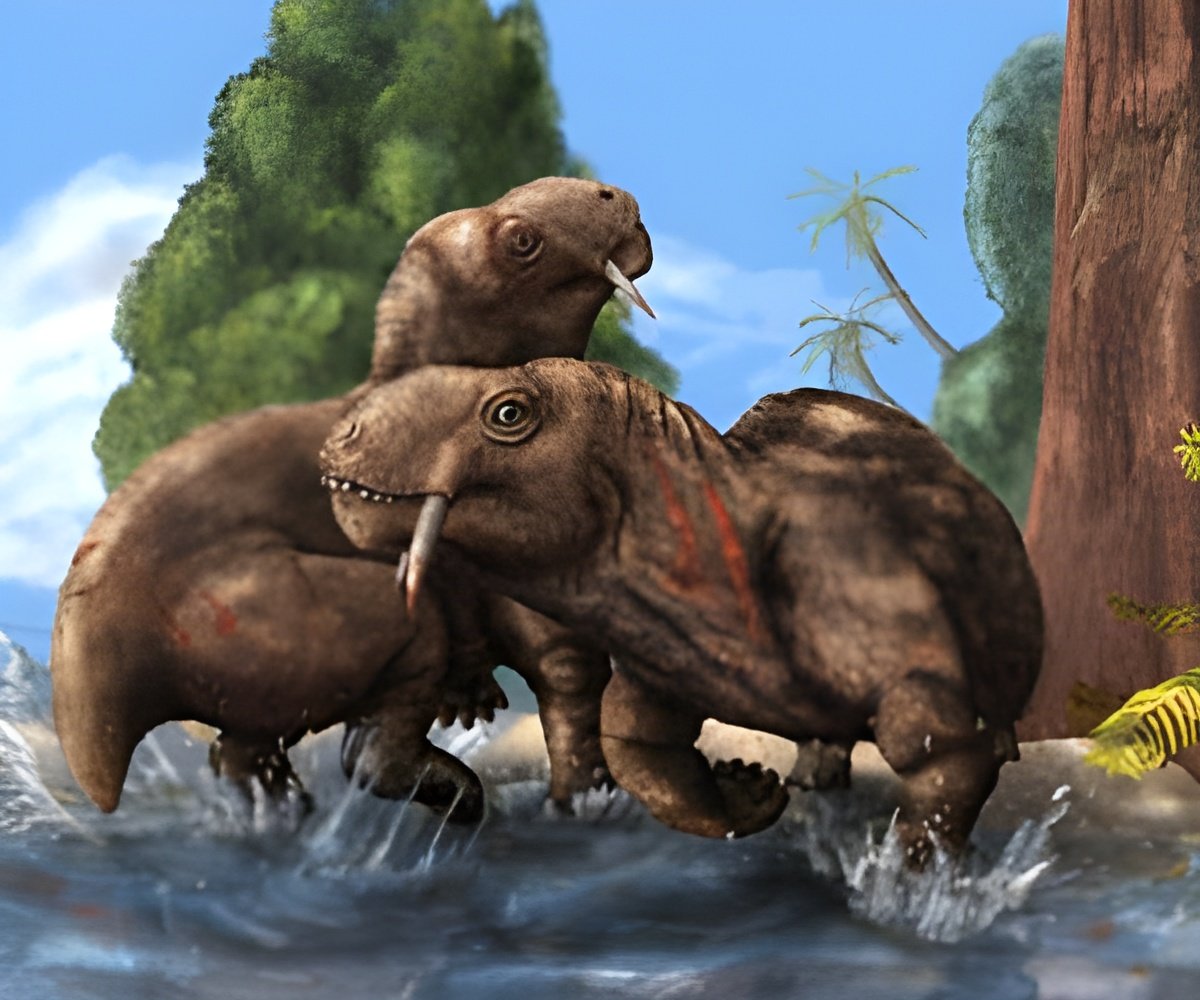
"Fossils always surprise us. Now they show us that 270 million years ago, two forms of inter-specific combat, represented in deer today, were already present in the forerunners of mammals," said lead researcher Juan Carlos Cisneros.
The results were published in the journal Royal Society Open Science.
Sabre-teeth are known to belong to the large Permian predators gorgonopsians (also known as sabre-tooth reptiles), and in the famous sabre-tooth cats from the Ice Age.
The discovery of T. eccentricus, a Brazilian species, also allowed for a reanalysis of the South African species Anomocephalus africanus, discovered 10 years earlier.
The two species have several similar features that clearly indicated they are closely related but the African species lack the sabre-tooth canines of its Brazilian cousin.
Advertisement
In deer today, enlarged canines are used in male-male displays during fighting. The long canine in the herbivore T. eccentricus is interpreted as an indication of its use in a similar way, and is the oldest evidence where male herbivores have used their canines during fights with rivals.
Advertisement
Source-IANS












